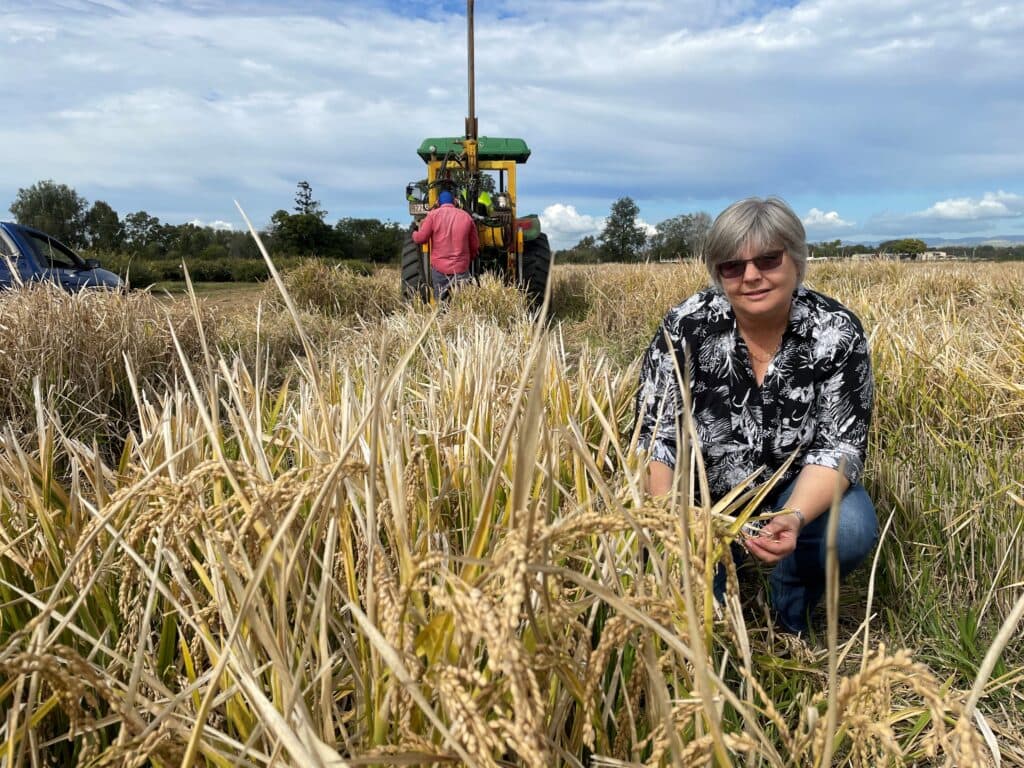Led by University of Queensland Senior Agronomy Lecturer Dr Jaquie Mitchell, the project focuses on developing the technology to identify genetic factors to assist Australia’s rice industry with breeding plants that thrive in lower-water production systems, and have the ability to withstand low temperature events.
The hope is, these plant varieties would produce similar rice yields than traditional flooded production systems but ultimately using less water.
And this innovative pre-breeding technology, is not too far away either, according to Dr Mitchell.
“We have identified two sets of markers that indicate cold tolerance and traits for successful aerobic rice production systems.”
These molecular markers will be available to help the Australian Rice Partnership (funded by AgriFutures Rice Program, SunRice and NSW Department of Primary Industries) make data driven decisions about their cross selections–a plant breeding method, where desirable traits from parent plants are crossed with each other by manually pollinating one plant with another.
One of the key breeding goals is to develop a rice plant with cold tolerance.
Cold tolerance is crucial in an aerobic rice production system because, unlike the traditional practice of flooding rice fields which submerges the plant panicle and helps to protect it, in an aerobic system this would be exposed to cold temperatures.
The key to developing a cold tolerant, aerobic adapted rice variety includes identifying the genotypes (a set of the plants genetic material or DNA) that not only survive, but thrive in these conditions, and incorporating these traits into Australian rice breeding programs.
More than meets the eye
To identify the genes that affect the outcome of specific traits for cold tolerance, Dr Mitchell and her team monitored plants in controlled temperature glasshouses which mimicked likely conditions in the Riverina.
Dr Mitchell said this practice developed a phenotyping system which enabled identification of cold tolerant varieties at both booting and flowering stage.
A phenotype includes observable characteristics of the plants.
Both genotype and phenotype experiments are needed to identify these genes and the molecular markers for plant breeders to use in order to breed varieties with these desirable traits.
“There is no one gene responsible for cold tolerance,” according to Dr Mitchell, rather there are a number of genes and together they have a significant impact.












